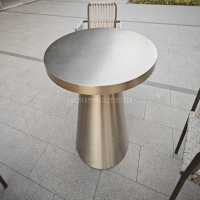Welcome to the website for landscape facilities products and knowledge.
Are there any specific guidelines for anchoring the table in windy or unstable environments?
When dealing with windy or unstable environments, proper table anchoring becomes crucial for safety and functionality. The fundamental principle involves understanding that wind forces and ground instability can compromise even the sturdiest tables if not properly secured.
Begin by assessing your specific environment. For windy conditions, consider wind direction patterns and maximum expected wind speeds. For unstable surfaces, evaluate ground composition and potential shifting. These factors will determine your anchoring approach.
For permanent installations in windy areas, concrete footings provide the most reliable solution. Dig holes at least 24 inches deep for each table leg, insert the legs, and pour concrete around them. Allow proper curing time before subjecting the table to use. This method distributes wind forces deep into the ground, preventing tipping.
Temporary setups require different strategies. Use screw-in ground anchors specifically designed for outdoor furniture. These helical anchors twist into the soil and provide excellent resistance to uplift forces. Combine them with durable ratchet straps connected to the table's structural points, not just decorative elements.
In extremely windy coastal or mountainous regions, consider adding weight to the table base. Sandbags or water-filled weights can be strategically placed around the table legs. For maximum effectiveness, position weights to counter the predominant wind direction.
When dealing with unstable surfaces like sand or soft soil, increase the surface area. Attach larger foot plates to table legs to distribute weight more evenly. Alternatively, use multiple anchor points at different angles to create a web-like stabilization system.
Regular maintenance checks are essential. Inspect anchors monthly for corrosion or wear. Test tension on straps and check for soil erosion around permanent installations. Remember that environmental conditions change, so your anchoring system might need adjustments with seasonal weather patterns.
Professional installers recommend redundancy in anchoring systems. Use at least two different anchoring methods simultaneously. For example, combine ground screws with weighted bases. This approach ensures that if one system fails, the secondary system provides backup security.
Always consider local building codes and regulations when installing permanent anchors. Some areas have restrictions on ground penetration depth or require specific materials for environmental protection.
The key to successful table anchoring in challenging conditions lies in proper planning, quality materials, and regular maintenance. By implementing these specific guidelines, you can ensure your tables remain stable and secure regardless of environmental challenges.
Related search:

Recommendation
Outdoor Metal Table - Classic Outdoor Furniture, Stainless Steel Table, Durable and Reliable